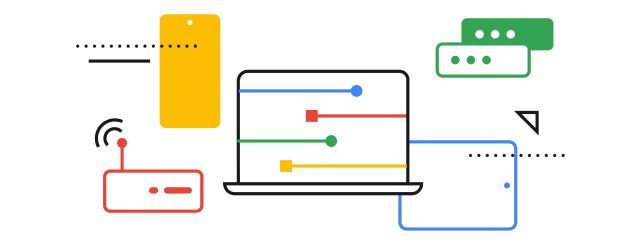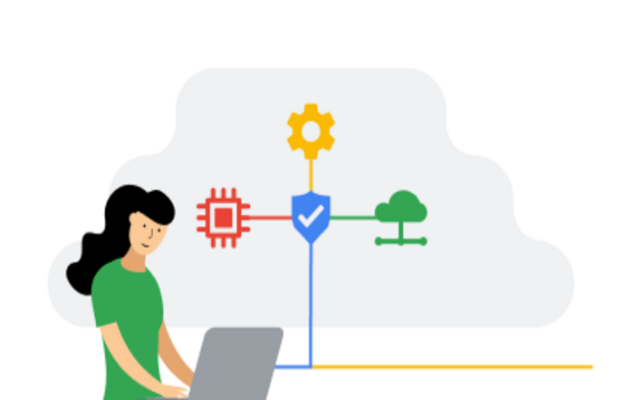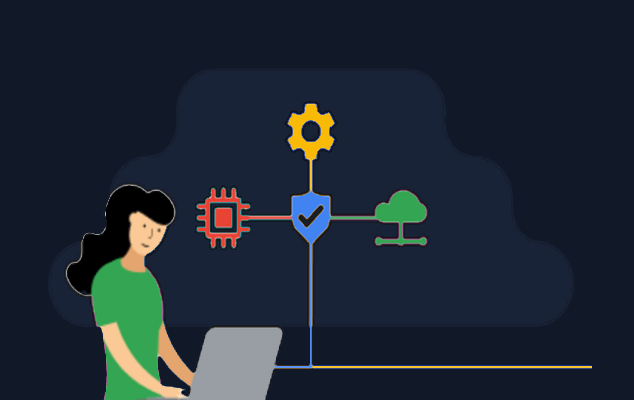



Discover - Interact - Engage
This is your path to a career in IT. In this program, you’ll learn in-demand skills with no degree or experience required.

Pave your path to career success by gaining a professional Google certificate with the support of C4U



Gain skills required to succeed in an entry-level IT job
Learn to perform day-to-day IT support tasks including computer assembly, wireless networking, installing programs, and customer service
Learn how to provide end-to-end customer support, ranging from identifying problems to troubleshooting and debugging
Learn to use systems including Linux, Domain Name Systems, Command-Line Interface, and Binary Code




When you complete all of the courses in the program, you'll earn a Certificate to share with your professional network as well as unlock access to career support resources to help you kickstart your new career.
This course is the first of a series that aims to prepare you for a role as an entry-level IT Support Specialist. In this course, you’ll be introduced to the world of Information Technology, or IT. You’ll learn about the different facets of Information Technology, like computer hardware, the Internet, computer software, troubleshooting, and customer service. This course covers a wide variety of topics in IT that are designed to give you an overview of what’s to come in this certificate program.
Understand how the binary system works
Learn how applications are created and how they work under the hood of a computer
Utilize common problem-solving methodologies and soft skills in an Information Technology setting
Assemble a computer from scratch
Choose and install an operating system on a computer
Understand what the Internet is, how it works, and the impact it has in the modern world

When you complete all of the courses in the program, you'll earn a Certificate to share with your professional network as well as unlock access to career support resources to help you kickstart your new career.
This course is designed to provide a full overview of computer networking. We’ll cover everything from the fundamentals of modern networking technologies and protocols to an overview of the cloud to practical applications and network troubleshooting.
Describe computer networks in terms of a five-layer mode
Understand all of the standard protocols involved with TCP/IP communications
Grasp powerful network troubleshooting tools and techniques
learn network services like DNS and DHCP that help make computer networks run
Understand cloud computing, everything as a service, and cloud storage

When you complete all of the courses in the program, you'll earn a Certificate to share with your professional network as well as unlock access to career support resources to help you kickstart your new career.
In this course -- through a combination of video lectures, demonstrations, and hands-on practice -- you’ll learn about the main components of an operating system and how to perform critical tasks like managing software and users, and configuring hardware.
Navigate the Windows and Linux filesystems using a graphical user interface and command line interpreter
Set up users, groups, and permissions for account access
Install, configure, and remove software on the Windows and Linux operating systems
Configure disk partitions and filesystems
Understand how system processes work and how to manage them
work with system logs and remote connection tools

When you complete all of the courses in the program, you'll earn a Certificate to share with your professional network as well as unlock access to career support resources to help you kickstart your new career.
This course will transition you from working on a single computer to an entire fleet. Systems administration is the field of IT that’s responsible for maintaining reliable computers systems in a multi-user environment. In this course, you’ll learn about the infrastructure services that keep all organizations, big and small, up and running. We’ll deep dive on cloud so that you’ll understand everything from typical cloud infrastructure setups to how to manage cloud resources. You'll also learn how to manage and configure servers and how to use industry tools to manage computers, user information, and user productivity. Finally, you’ll learn how to recover your organization’s IT infrastructure in the event of a disaster.
Utilize best practices for choosing hardware, vendors, and services for your organization
Understand how the most common infrastructure services that keep an organization running work, and how to manage infrastructure servers
Understand how to make the most of the cloud for your organization
Manage an organization’s computers and users using the directory services , Active Directory, and OpenLDAP
Choose and install an operating system on a computer
Backup your organization’s data and know how to recover your IT infrastructure in the case of a disaster
Utilize systems administration knowledge to plan and improve processes for IT environments

When you complete all of the courses in the program, you'll earn a Certificate to share with your professional network as well as unlock access to career support resources to help you kickstart your new career.
This course covers a wide variety of IT security concepts, tools, and best practices. It introduces threats and attacks and the many ways they can show up. We’ll give you some background of encryption algorithms and how they’re used to safeguard data. Then, we’ll dive into the three As of information security: authentication, authorization, and accounting. We’ll also cover network security solutions, ranging from firewalls to Wi-Fi encryption options. The course is rounded out by putting all these elements together into a multi-layered, in-depth security architecture, followed by recommendations on how to integrate a culture of security into your organization or team.
How various encryption algorithms and techniques work as well as their benefits and limitations
Various authentication systems and types
The difference between authentication and authorization
How to evaluate potential risks and recommend ways to reduce risk
Best practices for securing a network
How to help others to grasp security concepts and protect themselves
Daniel, IT Support Specialist at Central Community College and Google IT Support Certificate graduate
Copyright © 2024 Creatives For You LTD.